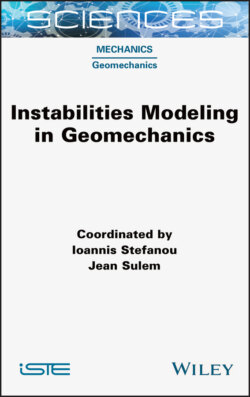Читать книгу Instabilities Modeling in Geomechanics - Jean Sulem - Страница 18
1.5.3. Localization during drying of geomaterials
ОглавлениеCracking of geomaterials during drying is a purely mechanical problem, but highly coupled with the pore fluid flow. As per the definition, drying is a multiphase phenomenon with quite a complex multiphysics, including phase change, capillarity, flow, deformability and (perhaps) water cavitation during the phenomenon of air entry, which per se is a fluid–gas interface instability. In addition, it requires considerations to be made at three scales: macroscale continuum, mesoscale of grain and pore clusters, and microscale of individual pore structure or grains with liquid bridges. Hueckel et al. (2014) postulate that drying cracking consists of a series of processes, starting with evaporation of water at the external surface, inducing a negative liquid pressure and flow out from the deformable soil undergoing shrinkage in response. According to Terzaghi (1950), the air invasion takes place when the menisci at the saturated external soil surface reach the size of the biggest pores, but when the soil pores are deformable, it affects air entry. As for the drying cracking, it is postulated that an air finger entering the soil as an instability of the water/air interface (Figure 1.18) constitutes a defect in the soil body, around which a stress concentration arises, when there are external constraints to shrinkage. An amplification of total tensile stress induces a localized high tensile effective stress, higher than the value of suction, resulting in a tensile failure, i.e. crack. Hence, a local value of air entry suction controls the local stress amplification at the defect. The mesoscale linear fracture mechanics analysis yields the stress values in the plausible range of tensile strength. In this scenario, the cracking needs to be considered at a continuum scale, while the air entry is a microscale phenomenon. In addition, the air entry requires a certain threshold suction to develop, which in turn changes the size of the pores. Hence, certain processes involved are sequential.
Figure 1.18. Evolution of the water body between eight glass spheres subjected to evaporation at a constant temperature and constant ambient vapor pressure. The arrow indicates a localized non-symmetric unstable mode of the interface evolution (air entry finger) (from Hueckel et al. 2014). For a color version of this figure, see www.iste.co.uk/stefanou/instabilities.zip
There is a host of other similar problems in which multiphysical behavior leads to instabilities, which have not been addressed here due to limited space. They include liquefaction and instability of rock faults and mine pillars related to earthquakes, breakthrough flow due to dissolution of minerals affecting permeability, sinkholes and mine collapses.
